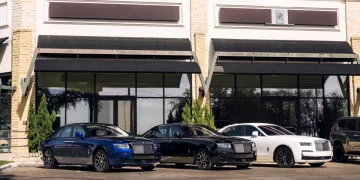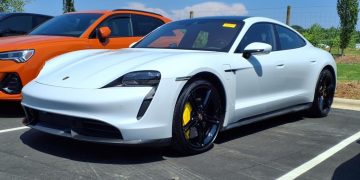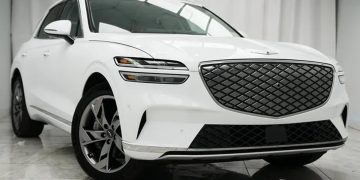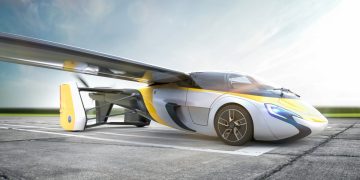As the automotive industry advances, the safety features of sedans are evolving at an impressive rate. Today’s sedans are not just built with traditional safety devices like airbags and seatbelts but also integrate cutting-edge technologies, artificial intelligence, and advanced sensors to make driving safer, smarter, and more reliable. From active safety systems to passive safety designs, the safety of modern sedans has reached unprecedented levels. In this article, we’ll dive deep into the innovative safety features in sedans and how they are improving driver and passenger protection.
1. Active Safety Technologies: Guarding Every Mile
Active safety technologies focus on preventing accidents from happening in the first place. Unlike passive safety devices, such as airbags, active safety systems work by alerting the driver or even taking corrective actions to avoid a collision. Here are some key active safety innovations:
Automatic Emergency Braking (AEB)
Automatic Emergency Braking (AEB) is one of the most groundbreaking safety innovations in recent years. The system uses radar and cameras to detect obstacles or vehicles ahead and automatically applies the brakes when a potential collision is imminent. It’s designed to avoid or mitigate collisions in situations where the driver might be distracted or slow to react.
For example:
- Volvo S90: Volvo’s City Safety system automatically activates AEB to reduce the risk of rear-end collisions, particularly at low speeds in urban environments.
Adaptive Cruise Control (ACC)
Adaptive Cruise Control is a system that automatically adjusts a vehicle’s speed to maintain a safe following distance from the car ahead. It uses radar and cameras to monitor traffic conditions in real-time, enabling the vehicle to accelerate or decelerate automatically, especially in stop-and-go traffic. This feature significantly reduces driving fatigue, particularly on long highway trips.
For example:
- Mercedes-Benz E-Class: The “Distronic Plus” adaptive cruise control system is capable of not only maintaining speed but also performing automated lane changes and handling stop-and-go traffic on highways.
Lane Keeping Assist (LKA)
Lane Keeping Assist systems use cameras and sensors to monitor lane markings on the road. If the car drifts unintentionally, the system provides visual or auditory warnings or even applies slight steering inputs to guide the car back into its lane. Some luxury sedans go a step further with Lane Centering, ensuring that the vehicle stays perfectly centered in the lane.
For example:
- Audi A8: Audi’s Lane Keeping Assist system features a semi-autonomous driving mode that helps keep the vehicle centered in the lane at high speeds.
2. Passive Safety Technologies: Reinforcing Structure and Protection
Passive safety technologies are designed to minimize injuries in the event of a collision. With ongoing improvements in vehicle structure and material innovation, modern sedans are better equipped to protect passengers during crashes.
High-Strength Body Structure
Modern sedans are built with more advanced materials, such as high-strength steel, aluminum alloys, and even carbon fiber, which help absorb and dissipate crash forces. These materials are specifically engineered to improve the structural integrity of the vehicle, providing enhanced protection for occupants during a crash.
For example:
- BMW 7 Series: BMW uses high-strength steel and other lightweight materials to reinforce its sedan structure, improving both safety and crash performance.
Multi-Airbag Systems
Beyond the traditional front airbags, many modern sedans are equipped with side-impact airbags, knee airbags, curtain airbags, and even rear-seat airbags. These multi-point airbag systems deploy in different scenarios to cushion passengers from injuries in a variety of crash types.
For example:
- Audi Q7: Audi’s Q7 features a comprehensive airbag system, including front, side, curtain, and rear airbags, ensuring that all passengers are adequately protected in the event of a collision.
Crush Zones and Impact Absorption
The concept of “crush zones” or “crumple zones” is fundamental to passive safety. These are areas of the car designed to absorb and dissipate the energy from a collision, reducing the force transferred to the occupants. Modern sedans are engineered with advanced crumple zones that work in tandem with reinforced cabin structures to minimize injury in the event of a crash.
For example:
- Lexus LS: Lexus incorporates advanced crumple zones into the LS sedan’s design to absorb impact energy efficiently while preserving the integrity of the passenger cabin.

3. Cutting-Edge Driver Assistance Features
Modern sedans come equipped with a host of advanced driver-assistance systems (ADAS) that further enhance vehicle safety. These technologies are designed to monitor the driving environment, assist in avoiding potential hazards, and, in some cases, take over certain driving tasks entirely.
Blind Spot Monitoring (BSM)
Blind Spot Monitoring uses radar or cameras to alert the driver to vehicles in the blind spots—areas not easily visible through mirrors. When a vehicle enters a blind spot, the system will typically provide a visual or audible warning to prevent unsafe lane changes.
For example:
- Mercedes-Benz S-Class: The S-Class comes with an advanced Blind Spot Assist system that provides both visual and haptic warnings when a vehicle is detected in the driver’s blind spot.
360-Degree Camera Systems
A 360-degree camera system combines multiple cameras around the car to provide a bird’s-eye view of the vehicle’s surroundings. This system helps drivers park, maneuver in tight spaces, and avoid obstacles they might not see from the driver’s seat.
For example:
- BMW 5 Series: BMW’s Surround View Camera system provides a clear, all-around view of the vehicle, improving parking and low-speed maneuvering safety.
Forward Collision Warning (FCW)
Forward Collision Warning systems use radar and cameras to detect vehicles or obstacles ahead. The system alerts the driver if they are closing in too quickly on another vehicle, helping to prevent rear-end collisions.
For example:
- Toyota Camry: Toyota’s Safety Sense suite includes a Forward Collision Warning system that can prevent or mitigate collisions by alerting the driver and even applying the brakes if necessary.
4. Driver Monitoring Systems: Preventing Driver Fatigue and Distraction
As distractions continue to be one of the leading causes of accidents, driver monitoring systems are becoming an essential safety feature. These systems track the driver’s attention and can detect signs of fatigue or distraction.
Driver Attention Monitoring
Using cameras and sensors, the driver attention monitoring system can detect when a driver’s attention is drifting, often due to fatigue or distractions like texting or drowsiness. When the system identifies that the driver is not paying full attention to the road, it will issue a warning to encourage the driver to refocus.
For example:
- Audi A6: The A6 features a Driver Attention Alert system that monitors steering inputs and can notify the driver if it detects signs of drowsiness or inattention.
Fatigue Detection Systems
Some sedans come equipped with advanced fatigue detection systems that use various parameters such as eye-tracking or head movements to detect if a driver is too tired to continue driving. This system will recommend that the driver takes a break before continuing their journey.
For example:
- BMW 3 Series: The BMW 3 Series comes with a fatigue detection system that analyzes the driver’s steering patterns and provides alerts if signs of fatigue are detected.
5. Future Safety Innovations: The Road Ahead
As technology continues to evolve, we can expect even more innovations in sedan safety. From fully autonomous driving to AI-powered crash avoidance systems, the future of automotive safety is extremely exciting.
Autonomous Emergency Steering
One of the upcoming innovations in active safety is autonomous emergency steering. This system could take over the steering in emergency situations to help avoid obstacles or collisions, particularly in scenarios where a driver is unable to react quickly enough.
Artificial Intelligence and Predictive Safety
Artificial intelligence (AI) will play a key role in the future of automotive safety. AI can predict dangerous situations based on a driver’s behavior and external road conditions. For instance, AI could adjust a car’s speed or braking behavior in anticipation of potential road hazards, even before the driver notices them.
Conclusion: A Safer Future for Sedans
The safety innovations in today’s sedans are remarkable. With advanced active safety systems, intelligent driver assistance features, and reinforced structural designs, modern sedans are equipped to provide an unparalleled level of protection. As new technologies continue to emerge, we can expect even safer, more intelligent vehicles in the future. Investing in a sedan with these innovative safety features is not only a choice for a better driving experience but also for ensuring the well-being of everyone on the road.











































